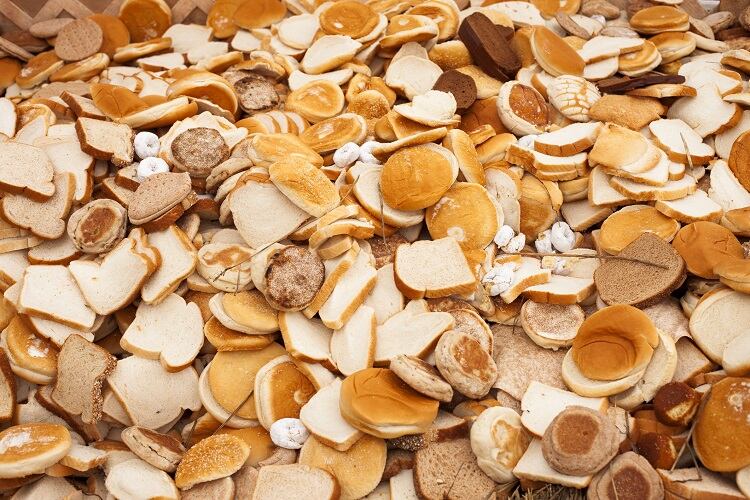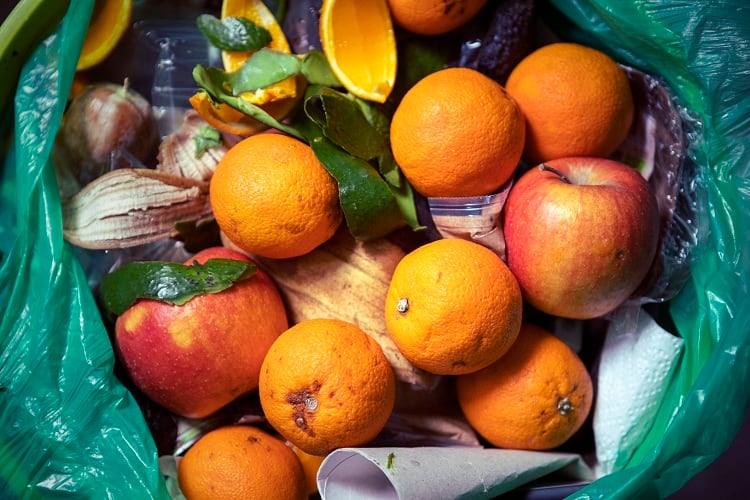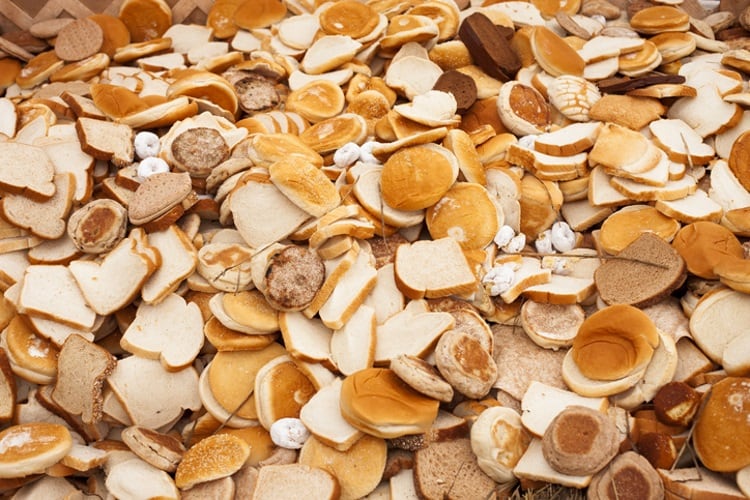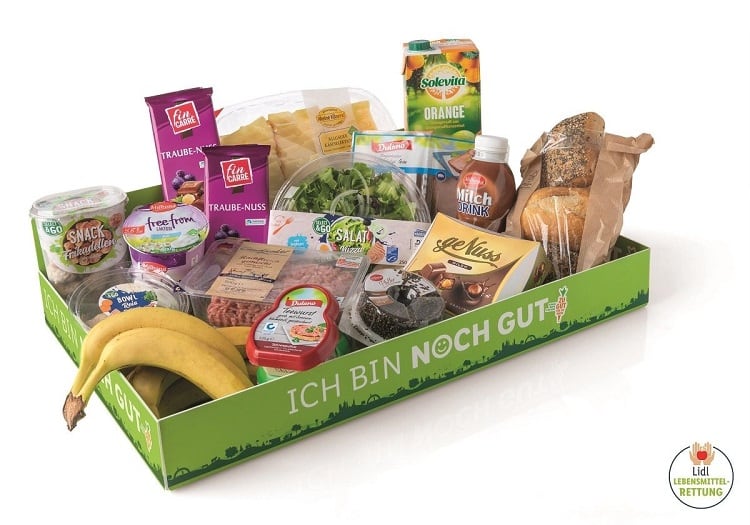Bread is one of the highest food waste categories. Determining just how much bread is wasted across the supply chain is difficult, but of the 100 million tons of bread produced globally per year, ‘hundreds of tons’ are thought to be wasted daily.
This is because bread is susceptible to staling and spoiling, meaning that waste is high in households and retail.
Indeed, according to food waste action charity WRAP, surplus bread is one of the biggest waste problems facing food retailers. WRAP approximates that surplus bakery products, including freshly baked lines, account for close to one-third – or 67,500 tonnes – of the UK’s total retail food waste.
Edible bread is also wasted during the manufacturing process, caused by the production of substandard products or processing factors. Consumer preferences also contribute to bread waste – such as strong demand for crustless sandwich loaves.
While a small part of bread waste is re-used for animal feed, the majority ends up in landfills that emit greenhouse gases, not to mention the carbon footprint associated with its production in the first place.
Now scientists have developed a way of repurposing waste bread, which they say can be used as a medium to grow bacteria, yeasts, and other microorganisms for fermented foods.
Upcycling bread waste for bakery, dairy and wine-making industries
A group of researchers in Italy focused on bread wasted during production, rather than in retail or in the household, explained the University of Bari Aldo Moro’s Michela Verni.
“The research was performed based on bread discarded within the industry because of consumers’ requests for sandwiches without crusts,” she told FoodNavigator, adding that collecting bread from industrial bakeries was also the easiest option from a logistics point of view.
“Of course, other sources could also be used – always taking into consideration the traceability of the product and, most of all, the final use of the medium.”
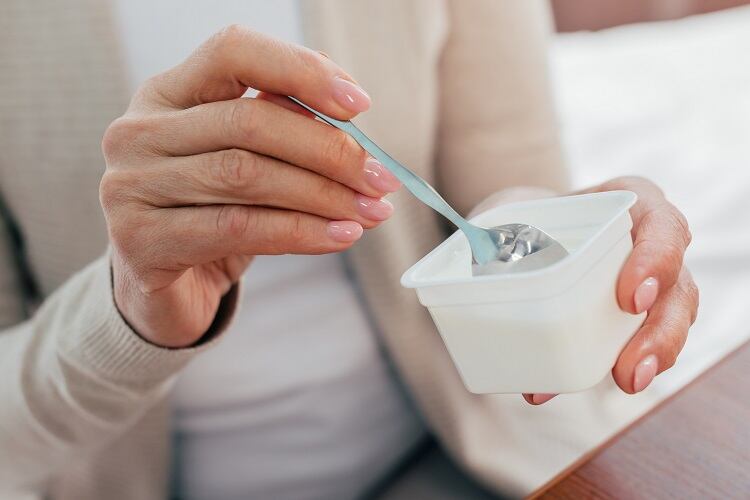
The researchers trialled more than 40 different kinds of growing conditions to find the best combination for varieties of bacteria, yeast, and microorganisms used in food fermentation.
Relevant variables included the amount of bread, enzymes, and supplemental ingredients, as well as incubation time and temperature.
“We assessed the suitability of the medium on a broad range of microorganisms, focusing on those commonly used in the food industry,” Verni’s colleague Carlo Rizzello told this publication.
Waste bread medium was successfully used to grow lactic acid bacteria used in the production of yoghurt, sourdough, or vegetables fermentation.
The researchers also used it to grow yeasts used in beer or wine production, as well as fungi used for blue cheese.
“These are only some of the fermented foods we put on our table daily,” Rizzello stressed. “There is a large number of other foods that use pre-cultivated microorganisms in their process.
“Just think about cocoa beans, sausages, fermented milks, dairy products, and many others. With just a few adjustments to the protocol, waste bread medium could be used for any kind of food starter.”
Cutting out the middleman
The researchers estimate that the cost of waste bread medium is ‘about a third’ of that of conventional media, which is traditionally purchased from ingredient suppliers.
This begs the question: could bakeries use their own waste bread to produce microorganisms – and cut out the middleman?
“Absolutely,” said Rizzello. “Industrial bakeries using starters for their sourdough are currently tied up to companies providing the starters and the media for their cultivation.
“By implementing the production of waste bread medium, they would benefit from it – using their own waste to produce the medium and propagate the cultures – without major efforts. The technology is extremely simple and does not require any changes in the production.”
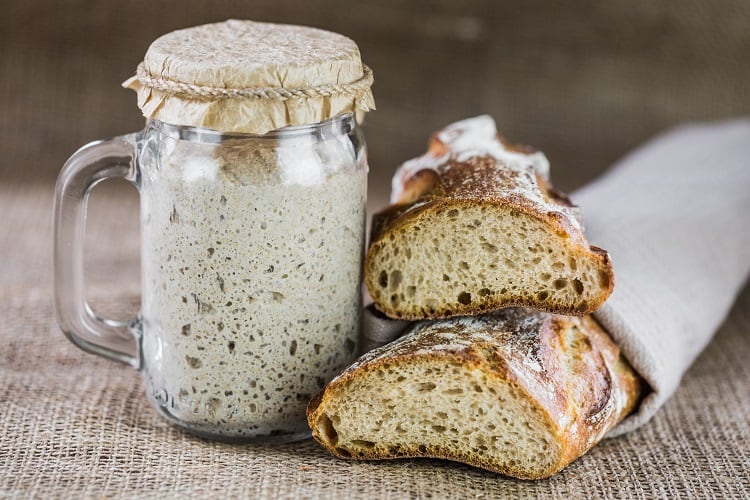
From a food safety perspective, the researchers stressed their patent pending process does not use bread that may be contaminated or handled by consumers.
“Until now, all the experiments were performed on bread waste at the production site and [while] the protocol for the medium production [includes] a sterilisation step, we cannot assure complete safety by using contaminated bread,” said Verni.
“Microorganisms can synthesize toxic compounds resistant to heat treatments. Therefore, mouldy bread could not be used for the purpose of food. Different routes should be put in place to use bread with guaranteed traceability.”
Source: Frontiers in Microbiology
‘Wasted bread as substrate for the cultivation of starts for the food industry’
Published 28 February 2020
DOI: https://doi.org/10.3389/fmicb.2020.00293
Authors: Michela Verni, Andrea Minisci, Sonia Convertino, Luana Nionelli, and Carlo G. Rizzello


